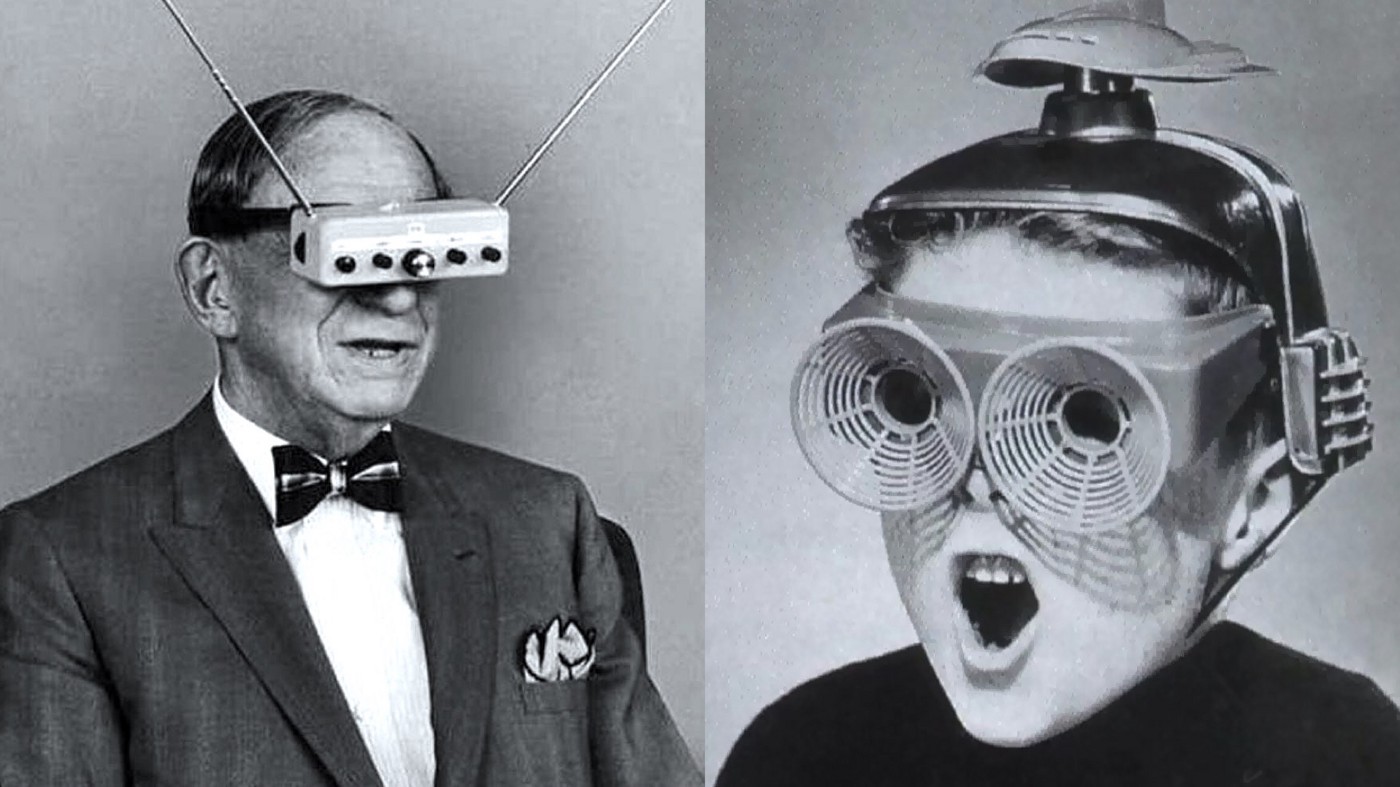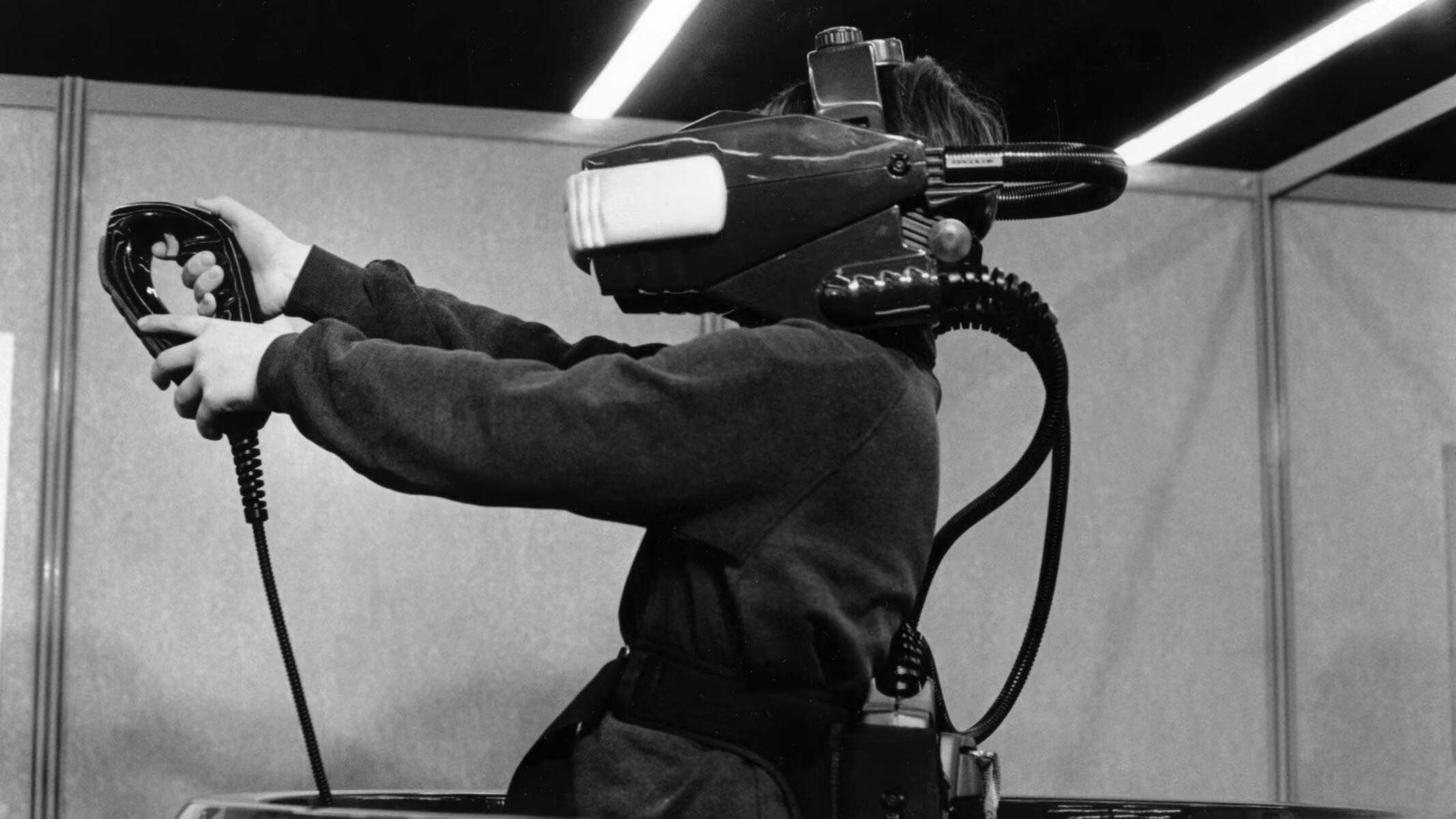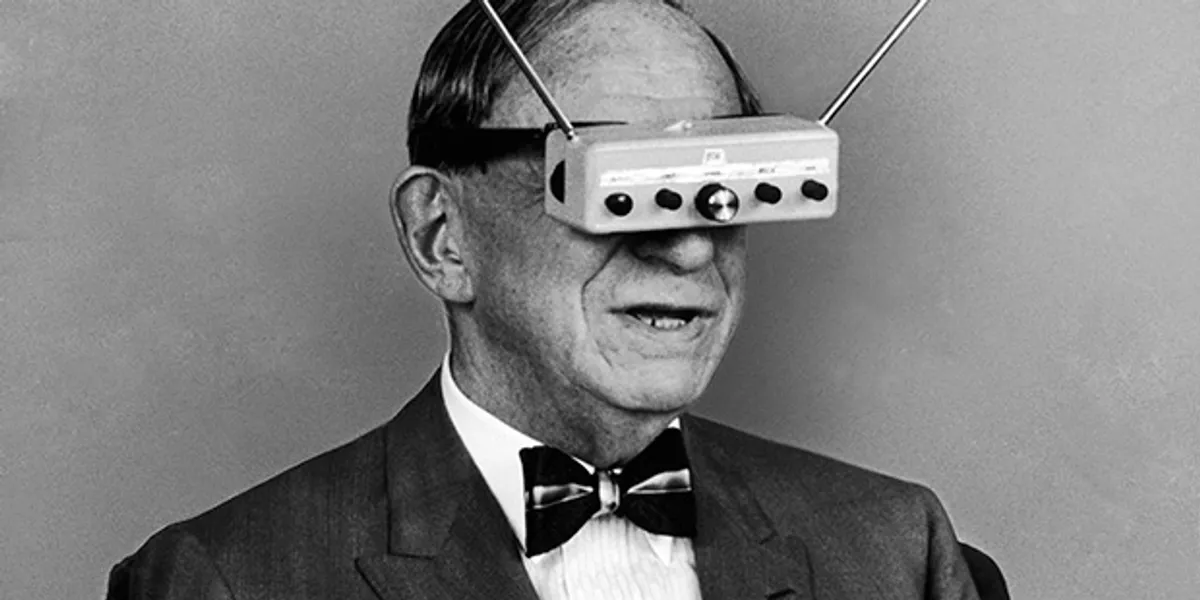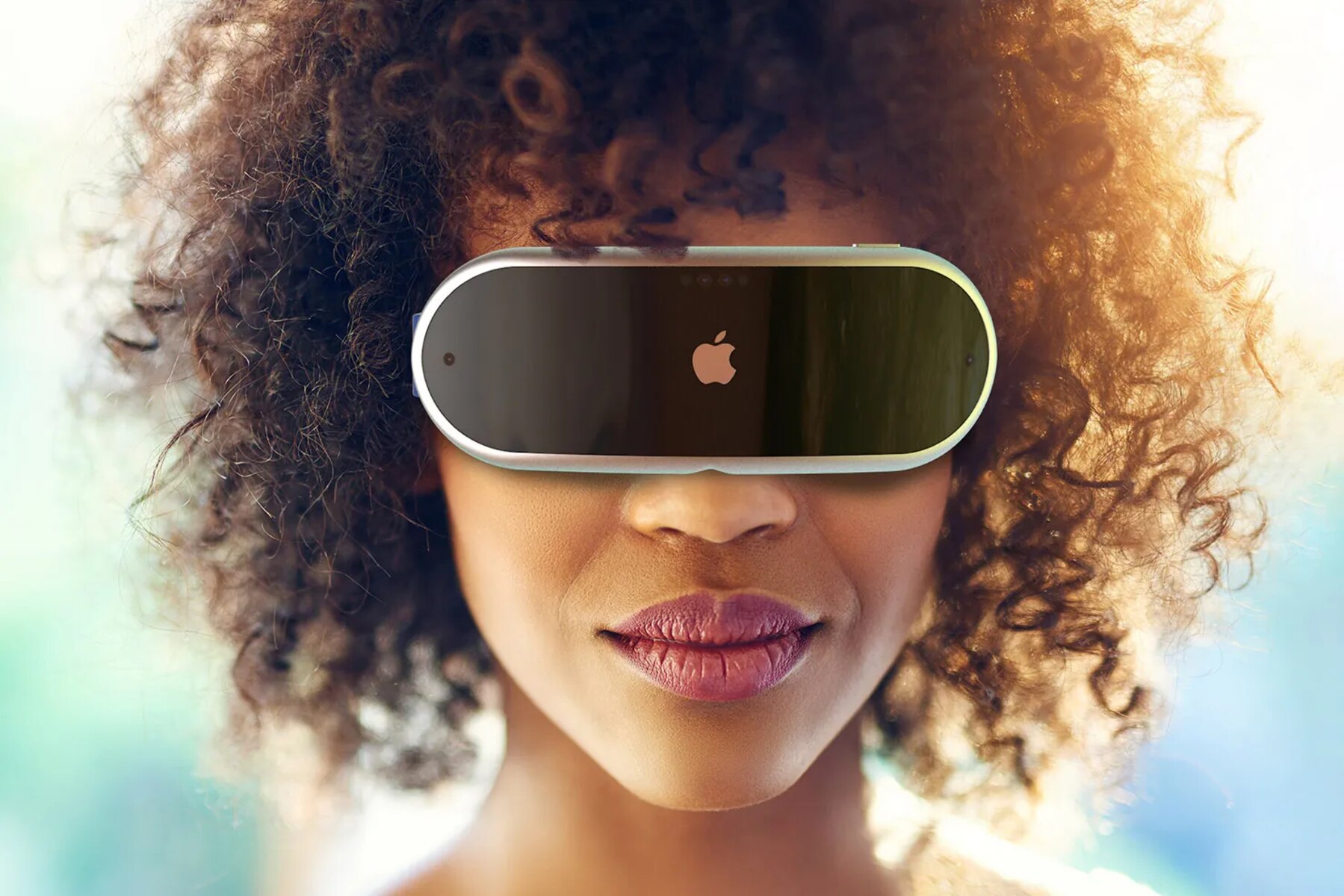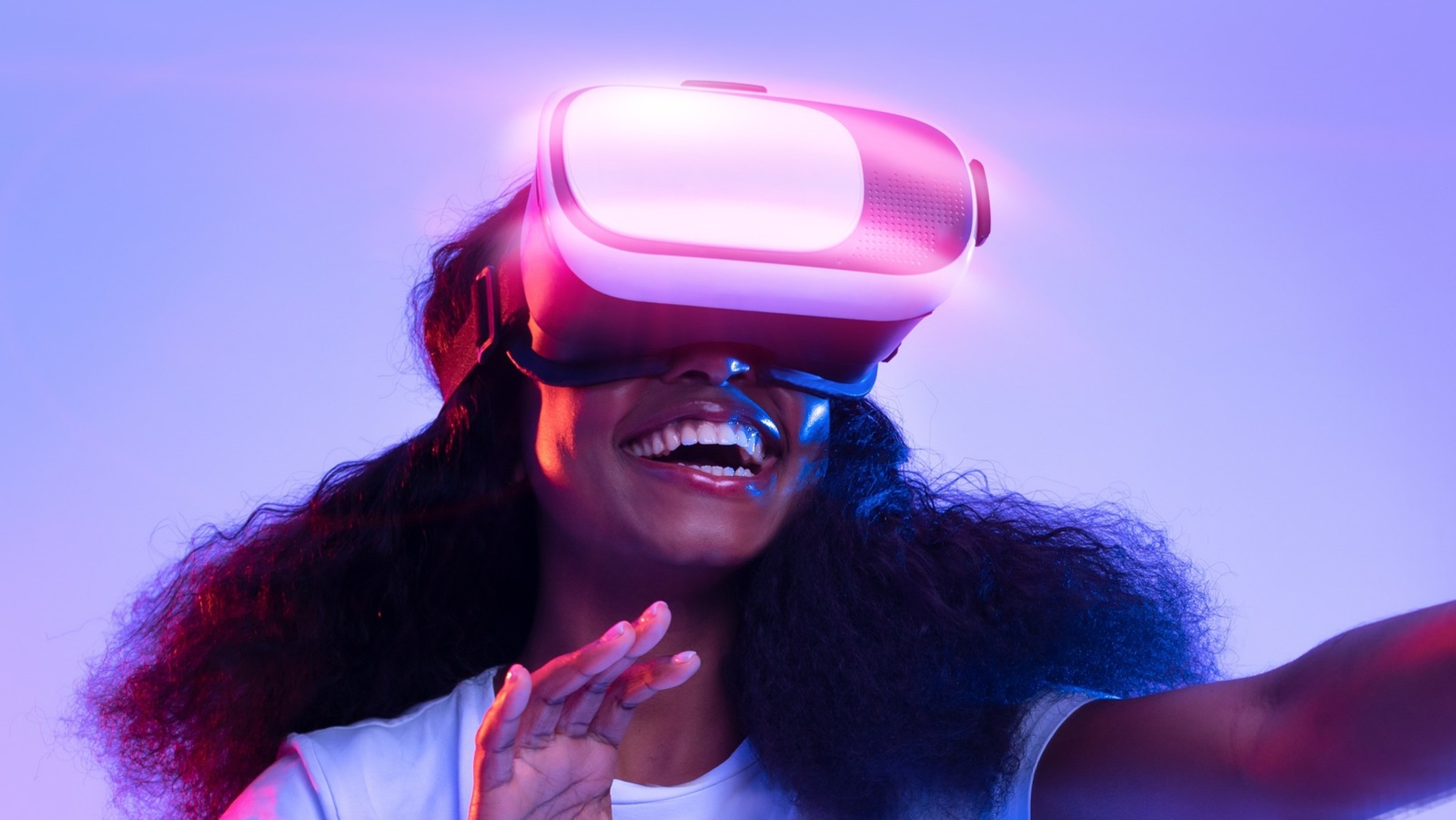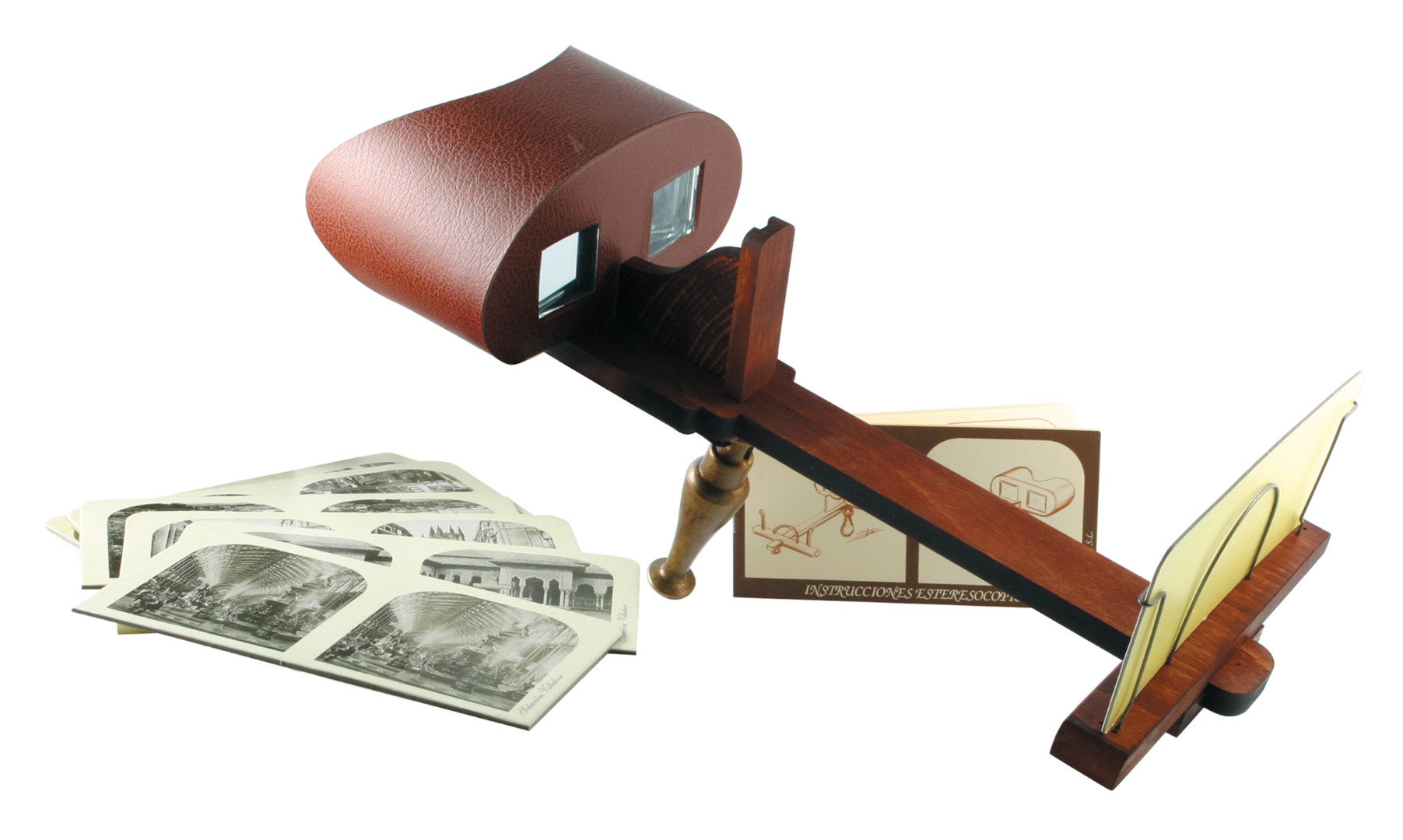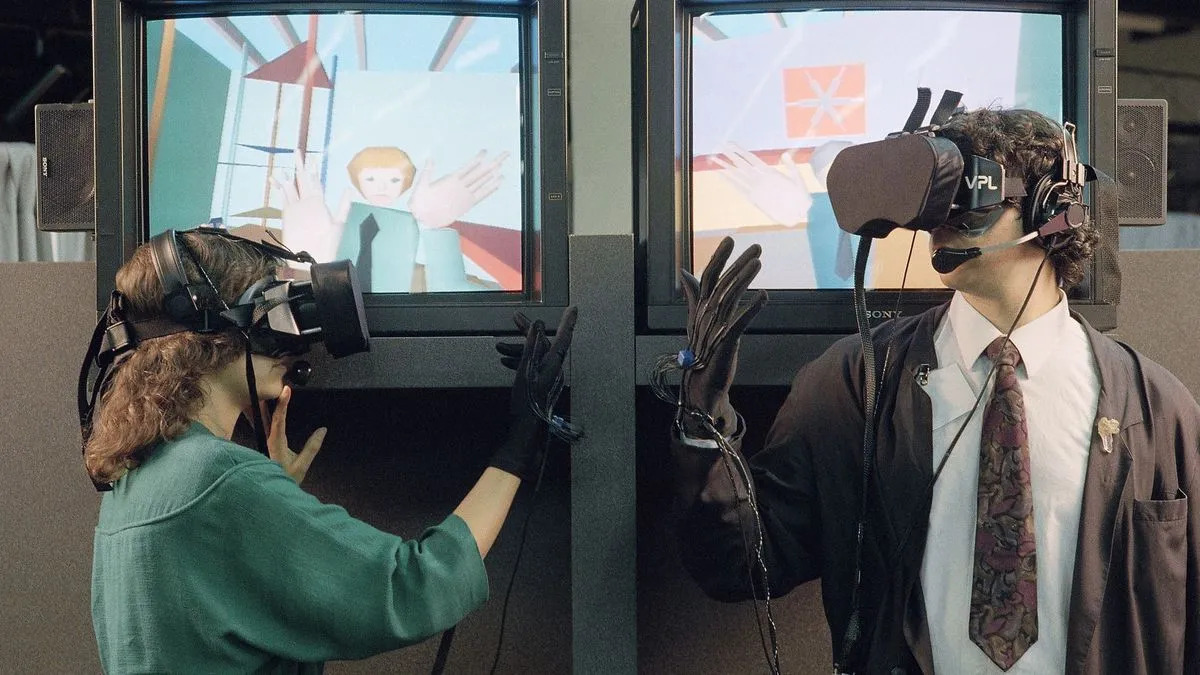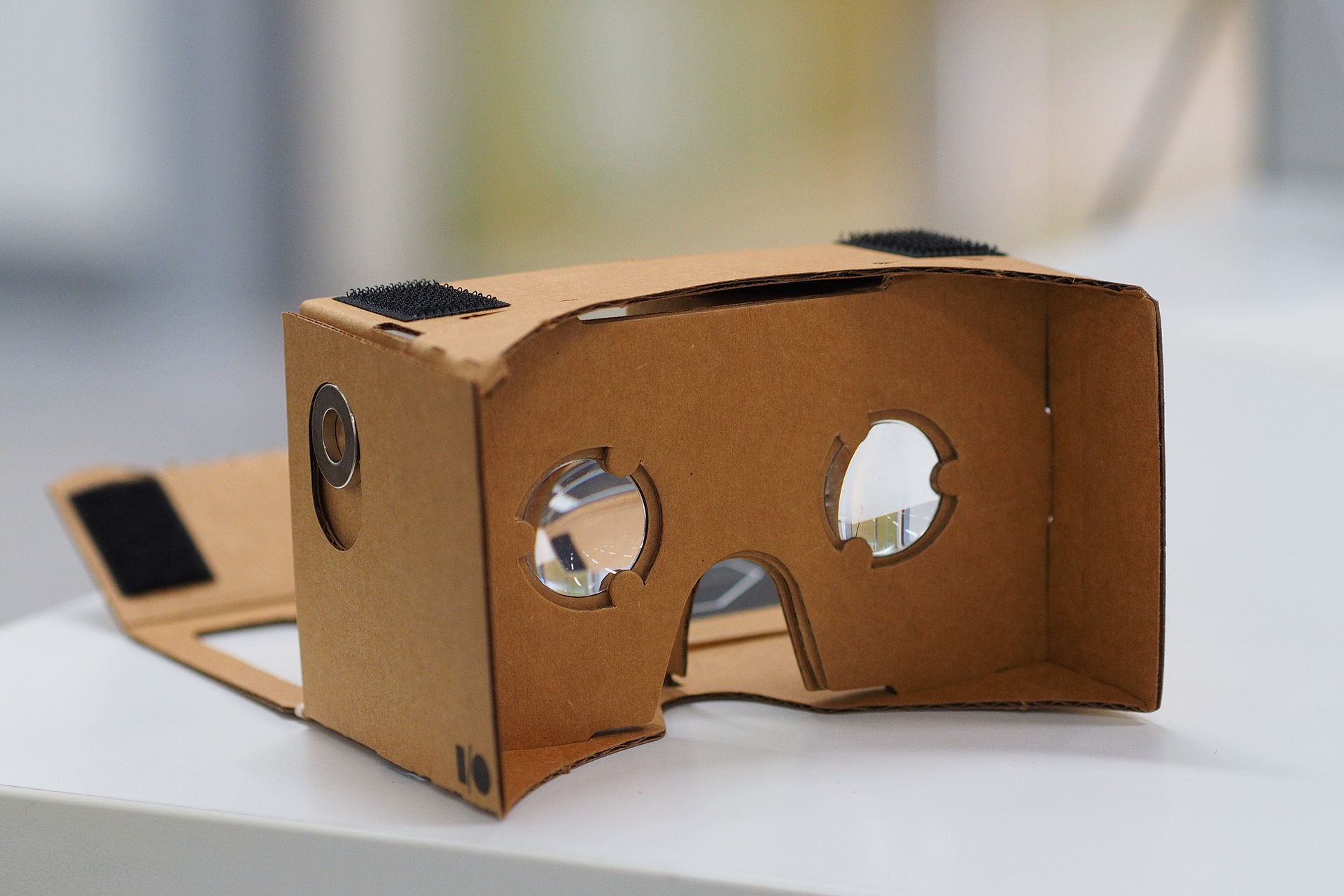Introduction
Virtual reality (VR) has become an increasingly popular and immersive technology in recent years, offering users the ability to enter a digital world and experience stunning visuals and interactive environments. But have you ever wondered when the first virtual reality headset was created?
The concept of virtual reality actually dates back several decades, with early pioneers seeking to create a simulated reality that could transport users to another world. The development of the first virtual reality headset marked a significant milestone in the evolution of this groundbreaking technology.
In this article, we will take a journey through time to explore the early days of virtual reality and delve into the birth of the first virtual reality headset. From early prototypes to groundbreaking breakthroughs, we will uncover the origins of this revolutionary technology and how it has evolved over the years.
Join us as we dive into the fascinating world of virtual reality and discover the pioneers who laid the foundation for the immersive experiences we enjoy today.
The Early Days of Virtual Reality
The concept of virtual reality can be traced back to the mid-20th century when scientists and researchers began exploring the possibilities of creating simulated worlds. In the 1960s, Ivan Sutherland, often referred to as the “father of computer graphics,” developed a head-mounted display called the “Sword of Damocles.” This early prototype laid the foundation for future advancements in virtual reality technology.
Throughout the 1970s and 1980s, researchers continued to push the boundaries of virtual reality. In 1968, computer scientist Douglas Engelbart showcased the NLS (oN-Line System) at the Fall Joint Computer Conference, introducing the concept of a computer interface that allowed users to work in a simulated environment. This pioneering work became a stepping stone for virtual reality development.
Another breakthrough came in 1987 when Jaron Lanier, a computer scientist, and entrepreneur, founded VPL Research. Lanier and his team developed a range of virtual reality devices, including the DataGlove and the EyePhone, which allowed users to interact with virtual environments through hand and head motions. These innovations brought virtual reality closer to becoming a mainstream technology.
The early days of virtual reality were marked by a combination of enthusiasm and optimism. Researchers and developers envisioned a future in which immersive experiences would be accessible to everyone. However, the limitations of technology and the high costs associated with hardware hindered widespread adoption.
Despite the challenges, the early pioneers of virtual reality persevered and continued to refine their technologies. These early experiments laid the groundwork for the creation of the first true virtual reality headset, taking us one step closer to the immersive experiences we enjoy today.
The Birth of the First Virtual Reality Headset
The development of the first virtual reality headset was a significant leap forward in bringing the concept of virtual reality to life. It marked a turning point in the history of this groundbreaking technology, enabling users to immerse themselves in a virtual world like never before.
One of the earliest examples of a virtual reality headset is the Sensorama, invented by Morton Heilig in the 1950s. The Sensorama was a large, box-like apparatus that included a stereoscopic screen, speakers, and a fan to provide a multisensory experience. Users would sit in a chair and strap on the headset, which would transport them to a virtual environment with accompanying visuals, sound, and even smells. Although not widely available to the public, the Sensorama laid the foundation for future advancements in virtual reality technology.
Fast forward to the 1960s, and we come across the work of Ivan Sutherland. Sutherland, a computer scientist, developed a head-mounted display called the “Sword of Damocles.” This early prototype consisted of a heavy helmet suspended from the ceiling with a display screen and mechanical tracking system. While the Sword of Damocles did not offer true virtual reality experiences, it was a crucial step in the development of head-mounted displays, which would eventually become a key component of virtual reality headsets.
The breakthrough in the birth of the first true virtual reality headset came in 1968 when the “Ultimate Display” concept was introduced by computer scientist Ivan Sutherland. This concept proposed a device that would allow users to experience a fully immersive virtual reality environment. While the technology to create such a device was not yet available, it paved the way for future advancements.
Another significant development in the birth of the first virtual reality headset came in the 1980s with the formation of VPL Research by Jaron Lanier. Lanier and his team created the DataGlove, which allowed users to interact with virtual environments using their hands. They also developed the EyePhone, a head-mounted display that provided stereoscopic visuals. These inventions played a crucial role in the development of virtual reality technology and set the stage for the creation of more advanced headsets.
Building upon these early innovations, virtual reality headsets would continue to evolve and become more accessible to the general public. The birth of the first virtual reality headset laid the foundation for a revolution in interactive experiences, paving the way for the immersive virtual reality technologies we have today.
The Sensorama: A Glimpse into the Future
The Sensorama, invented by Morton Heilig in the 1950s, was a groundbreaking device that provided a tantalizing glimpse into the future of virtual reality. It was an immersive experience far ahead of its time, offering users a multisensory journey into virtual environments.
The Sensorama was a large, box-like apparatus that users would sit in and strap on like a helmet. It included a stereoscopic screen, speakers, a fan, and even smell generators. These components worked together to create a truly immersive experience that engaged multiple senses simultaneously.
When a user activated the Sensorama, they would be transported into a virtual world displayed on the stereoscopic screen. The visuals were accompanied by stereo sound, which helped enhance the sense of presence and realism. The inclusion of a fan added to the experience by providing wind effects, further immersing the user in the virtual environment. Heilig even experimented with adding scent generators that released smells corresponding to the simulated environments, offering a truly multisensory experience.
While the Sensorama was not widely available to the public and primarily showcased in special theaters, it laid the foundation for future advancements in virtual reality technology. It exemplified the potential of immersive experiences and the impact they could have on entertainment, education, and various other industries.
Heilig’s vision for the Sensorama extended beyond just entertainment. He believed that the device could be used to educate, train, and simulate real-world experiences. His idea was to create an “experience theater” where users could have engaging and educational experiences, taking them to places they may have never been able to visit otherwise.
Though the Sensorama was not a commercially successful device, it served as a crucial stepping stone in the evolution of virtual reality technology. It demonstrated the potential for creating immersive experiences that extended beyond just visual and audio stimulation.
In many ways, the Sensorama can be considered a precursor to the modern virtual reality headsets we have today. Its emphasis on delivering a multisensory experience and its ambition to transport users to virtual environments foreshadowed the immersive experiences that we now enjoy.
As virtual reality continues to advance, the lessons and innovations of the Sensorama can still be seen and appreciated. It was a glimpse into the future of technology that sparked the imaginations of many and paved the way for the immersive virtual reality experiences we have today.
The Sword of Damocles: The Breakthrough in Head-Mounted Displays
The development of head-mounted displays (HMDs) played a pivotal role in the evolution of virtual reality technology. One significant milestone in HMD development was the invention of the “Sword of Damocles” by Ivan Sutherland in the 1960s.
The Sword of Damocles was a bulky and cumbersome contraption that consisted of a heavy helmet suspended from the ceiling. The helmet contained a display screen and a mechanical tracking system that allowed the user to view 3D computer-generated graphics.
This early prototype of an HMD may not have offered the full virtual reality experience we know today, but it introduced the concept of wearing a display device directly on the head, setting the stage for future advancements in head-mounted displays.
The name “Sword of Damocles” was inspired by the Greek legend of Damocles, who constantly lived in fear of a sword suspended above his head by a single horsehair. This symbolism was fitting for Sutherland’s invention, as the helmet literally hung above the user’s head, suspended by cables.
One of the groundbreaking features of the Sword of Damocles was its mechanical tracking system. This allowed the display to change in real-time as the user moved their head, creating a more immersive and interactive experience. The tracking system utilized sensors and a mechanical arm that adjusted the position of the display based on the user’s head movement.
While the Sword of Damocles was a remarkable achievement for its time, it was not without its limitations. The device was heavy and unwieldy, causing discomfort for the wearer. Additionally, the graphics displayed on the helmet were relatively simple compared to today’s standards. Despite these challenges, Sutherland’s creation marked an important breakthrough in the development of head-mounted displays.
The Sword of Damocles laid the foundation for future generations of HMDs, inspiring researchers and inventors to refine and improve upon this technology. It demonstrated the potential for creating immersive visual experiences using head-mounted displays and set the stage for further advancements in virtual reality.
Today, virtual reality headsets have evolved significantly from the early days of the Sword of Damocles. They are lighter, more comfortable, and capable of displaying incredibly lifelike and realistic graphics. However, it is important to recognize the pioneering work of Sutherland and the Sword of Damocles, as it paved the way for the development of the head-mounted displays that have revolutionized the way we experience virtual reality.
The Virtuality Headset: Taking VR to the Arcade
In the early 1990s, virtual reality (VR) began to make its way into the public consciousness through an innovative gaming experience known as the Virtuality Headset. Developed by the company Virtuality Group, this groundbreaking VR headset brought immersive gaming to arcades and revolutionized the way people interacted with virtual worlds.
The Virtuality Headset consisted of a bulky, head-mounted display worn by the player, along with a pair of handheld controllers. The headset featured stereoscopic displays that provided a 3D visual experience, while the controllers allowed players to interact with objects and navigate within the virtual environment.
What set the Virtuality Headset apart was its ability to deliver a truly immersive experience at a time when VR technology was still in its infancy. Players could step into virtual worlds and engage in multiplayer gameplay, offering a level of realism and interactivity that was previously unheard of.
The games for the Virtuality Headset were designed specifically for the arcade environment. They ranged from exciting multiplayer experiences, such as virtual battles and racing games, to captivating single-player adventures. The unique combination of the headset’s visual and audio capabilities, along with the tactile feedback from the controllers, made for an incredibly immersive and memorable gaming experience.
The Virtuality Headset’s popularity soared, and it quickly became a sensation in arcades around the world. People flocked to experience the thrill of stepping into virtual worlds and engaging in interactive gameplay. The futuristic nature of the technology and the sense of awe and wonder it evoked solidified its place as a groundbreaking advancement in the gaming industry.
Despite its early success, the Virtuality Headset faced some challenges. The headset itself was heavy and cumbersome, causing discomfort for some players during extended gameplay sessions. The high price point of the technology also limited its accessibility for home use, making the arcade the primary venue for experiencing virtual reality through the Virtuality Headset.
However, the Virtuality Headset paved the way for future innovations in VR gaming. It demonstrated the potential for creating immersive, interactive experiences that captured the imaginations of players. The popularity of the Virtuality Headset laid the foundation for the development of more advanced and user-friendly VR headsets that we see today.
While the Virtuality Headset may now be seen as a relic of gaming history, its impact on the industry cannot be overstated. It introduced a new level of immersion and interactivity, and its influence can still be felt in the modern virtual reality gaming experiences that continue to captivate players today.
The Sega VR Headset: A Promising Idea That Never Came to Fruition
In the mid-1990s, Sega, a prominent player in the gaming industry, had a vision of bringing virtual reality (VR) to the home gaming console market. They introduced the Sega VR headset, a promising idea that aimed to revolutionize gaming experiences. Unfortunately, this ambitious project never came to fruition, leaving gamers to wonder what could have been.
The Sega VR headset was designed to be used with the Sega Genesis console, providing gamers with an immersive VR experience in the comfort of their own homes. It featured an advanced head-mounted display that allowed players to explore virtual worlds and interact with games in a way that had never been seen before.
One of the key innovations of the Sega VR headset was its use of motion tracking technology. The headset included sensors that could detect the player’s head movements, allowing for a more intuitive and immersive gaming experience. Gamers could physically look around and interact within the virtual environments, enhancing the sense of presence and realism.
Sega showcased the potential of the VR headset with a few tech demos and even partnered with renowned game developer, Sega-AM2, to create a game specifically for the Sega VR called “Nemesis”. The game was a flight combat simulator that showcased the capabilities of the headset, but unfortunately, it never made it to the market.
Despite the initial excitement and buzz surrounding the Sega VR headset, the project faced various challenges that ultimately led to its demise. One significant obstacle was the high production costs associated with the technology at the time. The VR headset was expensive to manufacture, making it difficult to sell at an affordable price point for the mainstream gaming market.
Another major factor that contributed to the downfall of the Sega VR headset was the issue of motion sickness. Some users reported feeling dizziness and discomfort after using the headset for extended periods. This negative user experience, combined with the cost and technical constraints, led Sega to ultimately cancel the project.
Although the Sega VR headset never saw a commercial release, its impact on the gaming industry cannot be overlooked. It was an ambitious project that pushed the boundaries of gaming technology and showcased the potential of virtual reality. The ideas and lessons learned from the Sega VR headset undoubtedly influenced the development of subsequent VR gaming platforms.
While the Sega VR headset may have faded into obscurity, its legacy lives on in the quest for immersive gaming experiences. It served as a stepping stone in the evolution of virtual reality technology and as a reminder of the complexities and challenges of bringing VR to the mass market at that time.
The Forte VFX1: The First VR Headset for PC Gaming
In the late 1990s, VR enthusiasts saw a groundbreaking development in the form of the Forte VFX1, the first virtual reality (VR) headset specifically designed for PC gaming. This innovative device brought immersive VR experiences to the realm of personal computers, revolutionizing the gaming industry and paving the way for future advancements in virtual reality technology.
The Forte VFX1 headset was a marvel of its time, featuring a head-mounted display and a built-in audio system. The device offered gamers a truly immersive experience, enabling them to step into virtual worlds and interact with games in a way never before possible.
One of the standout features of the Forte VFX1 was its head-tracking system. This allowed users to look around and interact with the virtual environment naturally. As players moved their heads, the in-game perspective would correspondingly change, enhancing the sense of presence and realism within the virtual world.
The headset also featured stereo sound, with integrated headphones providing an immersive audio experience. This combination of immersive visuals and audio made the Forte VFX1 a game-changer in the PC gaming industry.
One notable aspect of the Forte VFX1 was its compatibility with popular PC games of the time. The device came with its own set of drivers and software that enabled users to enjoy VR experiences with compatible titles. This opened up a new realm of possibilities for gamers, allowing them to experience their favorite games in a whole new way.
Despite its technological advancements, the Forte VFX1 faced some limitations. The headset was relatively bulky and uncomfortable to wear for extended periods. It also required a powerful computer system to run smoothly, making it less accessible for some gamers.
Additionally, the Forte VFX1 faced challenges in terms of software support. While it was compatible with select PC games, the lack of widespread adoption and integration with game developers meant that not all titles could take full advantage of the headset’s capabilities.
Nevertheless, the Forte VFX1 made a significant impact on the gaming industry and showcased the potential of VR gaming on personal computers. It laid the foundation for future advancements in virtual reality technology, inspiring developers to continue refining and enhancing VR headsets for gaming experiences.
The legacy of the Forte VFX1 can still be felt in the present-day VR gaming landscape, with modern virtual reality headsets built upon the foundations set forth by its innovative design. It paved the way for the immersive and captivating VR gaming experiences that continue to captivate players today.
Conclusion
The journey through the history of virtual reality headsets has been an enlightening one. From the early days of the Sensorama and the Sword of Damocles to the promising Sega VR headset and the pioneering Forte VFX1, each milestone has contributed to the advancement of virtual reality technology.
These early virtual reality headsets may have faced their fair share of challenges, such as discomfort, high production costs, and limited availability, but they sparked the imagination and laid the groundwork for the immersive experiences we enjoy today.
Thanks to the ingenuity and determination of the pioneers and visionaries in the field, virtual reality headsets have evolved tremendously. Modern VR headsets, such as the Oculus Rift, HTC Vive, and PlayStation VR, offer stunning visuals, realistic sound, and precise motion tracking, providing users with truly immersive and captivating experiences.
Virtual reality has not only transformed the gaming industry but has also found applications in fields such as healthcare, education, architecture, and more. It has become a powerful tool for training, simulation, and even therapy.
As virtual reality technology continues to advance, we can only anticipate more exciting innovations and breakthroughs on the horizon. The future of virtual reality headsets holds the promise of even greater levels of immersion, interactivity, and accessibility, offering more people the chance to step into immersive digital worlds with ease.
From the Sensorama to the Sega VR, from the Sword of Damocles to the Forte VFX1, each milestone in the evolution of virtual reality headsets has pushed the boundaries of what is possible. These pioneering devices have paved the way for a transformative and immersive technology that continues to shape the way we experience and interact with digital content.
So, as we reflect on the journey so far, let us celebrate the ingenuity and dedication that have brought virtual reality headsets to where they are today. As technology continues to advance at a rapid pace, virtual reality will surely remain at the forefront of innovation, offering us new and exciting possibilities in the realm of immersive experiences.







